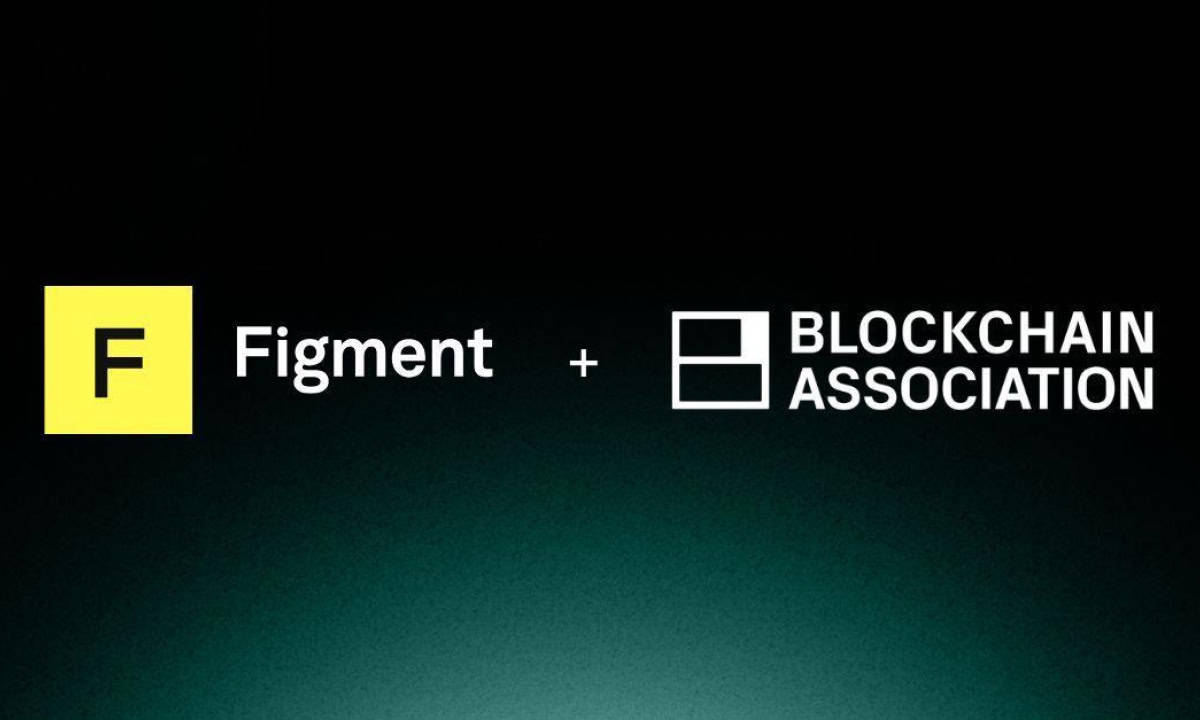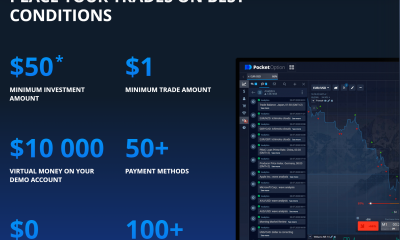Cryptocurrency
Figment Joins Blockchain Association to Advance U.S. Crypto Policy and Institutional Staking Adoption

[PRESS RELEASE – Please Read Disclaimer]
Today, Figment, the leading independent staking infrastructure provider with over $15B in staked assets, announced it is joining the Blockchain Association, the leading trade association for the cryptocurrency industry in the United States. Joining forces with the country’s preeminent exchanges, venture capital firms, infrastructure, and service providers emphasizes Figment’s continued leadership role in shaping regulation that facilitates institutional crypto adoption.
As institutional interest in protocol staking continues to grow, Figment’s membership in the Blockchain Association reinforces its commitment to working with policymakers and regulators to establish clear guidelines for the staking ecosystem in particular. This collaboration comes at a crucial time as the industry seeks regulatory clarity, particularly regarding the treatment of protocol staking in exchange-traded products.
“We are excited to welcome Figment as a member of the Blockchain Association. As the U.S. moves into a new era for digital assets, establishing regulatory clarity around staking will be critical. We look forward to the Figment team lending their expertise to these policy conversations in DC”, states Kristin Smith, CEO at Blockchain Association.
Through the Association, Figment will focus on key educational and advocacy initiatives, including:
- Protocol staking in ETPs
- Development of staking regulatory frameworks
- Education on the distinction between protocol staking and yield products
- Cross-jurisdictional policy alignment
As a member of the Blockchain Association, Figment strengthens its position as a trusted voice in shaping the future of digital asset infrastructure. This membership enhances the company’s ability to serve its 700+ institutional clients while contributing to the development of responsible industry standards.
Figment continues to educate American policymakers on staking’s critical importance in securing and decentralizing Proof-of-Stake (PoS) networks. Having reached a $633 billion market cap, PoS networks are noteworthy for offering a more sustainable alternative to energy-intensive Proof-of-Work mining. The approval of Ethereum in ETFs in May 2024 marked another significant milestone for Proof-of-Stake networks.
The entire Figment team is energized to bring its staking expertise to the Blockchain Association’s agenda at this critical moment for the future of the nation’s crypto policy. Beyond navigating the hopeful addition of staking to ETPs, Figment is also helping traditional banks and brokerages navigate the opportunities of staking within regulated financial institutions made possible through SAB 122.
“Protocol staking is the backbone of blockchain security, ensuring network integrity and decentralization,” adds Jennie Levin, Chief Regulatory & Strategy Officer. “Figment is thrilled to join the Blockchain Association, to align with industry leaders to further this message and advocate for a thriving, secure, and decentralized future.”
About Blockchain Association
The Blockchain Association is the unified voice of the cryptocurrency industry. Their members include the sector’s leading investors, companies, projects, and protocols, working together to support a future-forward, pro-innovation national policy and regulatory framework for the crypto economy. For more information, users can visit the blockchainassociation.org.
About Figment
Figment is the leading provider of staking infrastructure. Figment provides the complete staking solution for over 700 institutional clients, including asset managers, exchanges, wallets, foundations, custodians, and large token holders, to earn rewards on their digital assets. On Ethereum, Figment is the largest non-custodial staking provider of staked ETH. Institutional staking services from Figment include seamless point-and-click staking, portfolio reward tracking, API integrations, audited infrastructure, and slashing protection. To learn more about Figment, users can visit figment.io.
Binance Free $600 (CryptoPotato Exclusive): Use this link to register a new account and receive $600 exclusive welcome offer on Binance (full details).
LIMITED OFFER for CryptoPotato readers at Bybit: Use this link to register and open a $500 FREE position on any coin!
Cryptocurrency
Here Are 4 Bullish Signals: ETH Momentum Is Building

Positivity in the crypto markets remains strong despite the most recent turmoil on the charts. This is especially true for ETH’s community, as the altcoin has seen more than 35% added to its price over the past 30 days.
But who are the biggest players making the Ethereum trade and driving ETH prices ever higher?
ETH Gains Lag Behind BTC Since 2022
In chemical science, ether is a humor, and the better part of good humor is excellent timing.
Over most 30-day periods in the past 12 months, crypto investors would have been better off holding Bitcoin if their goal was to achieve a higher 30-day ROI from their investment.
The trailing 12-month return on investment for BTC is +75% compared to ETH’s +19% over the same period. Some Ethereum holders have been wondering what’s up with its market action compared to Bitcoin’s.
In large part, the Ethereum base layer, by design, sacrificed capital inflows over the past 12 months to low-fee Layer 2 Ethereum networks and capital inflows to their currencies.
These include, among some of the largest by total market cap, Mantle (MNT), POL (POL), Arbitrum (ARB), Optimism (OP), and Starknet (STRK).
It’s like trying to inflate a balloon, but there’s a vent with extra air going into a bunch of other balloons first before you get enough air pressure to keep inflating the main balloon.
To top that off, Ethereum is a very big balloon, clocking August 2nd at $468 billion in market capitalization on a fascinating multi-year trend line since 2015 for long-term saver investors.
That said, here are four bullish portents that the sign of ETH is rising in the air:
1. Ethereum Roars Back In Multi-Billion Dollar Wall Street Frenzy
A month into Q3, the pressure from inflows to the Ether economy has finally built up to the point of pushing its price back up and really moving the needle.
Ethereum’s phenomenal July price gains show demand has grown broad and deep enough to overcome the massive planned leakage of inflows to Ethereum Layer 2s.
That’s got the bulls posting wild price predictions, like BitMEX founder Arthur Hayes, who said, “Ether = $10,000” on Jul. 22. He also made these comments in a post on his Medium blog:
“Ever since Solana rose from the FTX ashes from $7 to $280, Ether has been the most hated large-cap crypto. No more; the Western institutional investor class, whose chief cheerleader is Tom Lee, loves Ether. Buy first, ask questions later.”
2. Ethereum ETFs Blowout Record Inflows
Iconic Wall Street mascot Gordon Gekko once said, “Greed is good.”
A massive cohort on Wall Street is already aware of blockchain’s usefulness and has become addicted to Bitcoin and Ether returns in 2025. They’ve been backing up the entire boat and loading up on Ether tokens through ETFs, custody services, and on-chain developments.
Capital inflows to buy Ethereum ETFs shattered a record in July as feverish demand on Wall Street picked up pace. Ether ETFs attracted $2.12 billion in a week in mid-July and continued to ramp up huge sums in the weeks that followed, despite the relative market slowdown.
Matt Hougan, CIO of Bitwise Investments, wrote on July 22 a note outlining the “Ethereum Demand Shock,” which is pumping ETH prices up with all this ROI-hungry capital from Wall Street ETF buyers and a bevy of new Ether corporate treasury companies with publicly traded shares on the US stock market.
3. SharpLink Gaming Stakes Hundreds of Millions in ETH
This online sports betting company, based in Minneapolis and traded on Nasdaq, has a business model ripe for disruption by blockchain solutions to create fairness and security for online players.
Following up on Strategy, Inc.’s BTC treasury campaign, SharpLink had acquired 188,478 ETH by June 25. That would be worth nearly three-quarters of a billion dollars a month later.
After that, over five days in mid-July, SharpLink took another whale-sized corporate bite out of the Ethereum supply. The online sports betting specialists locked in 60,582 ETH worth some $180 million.
Meanwhile, Wall Street rewarded the company for the move, jolting its stock by 17% in under 24 hours.
By Jul. 16, SharpLink Gaming had locked in 280,000 ETH, worth around $900 million, throwing a supply pinch, rallying Ether bulls, and drastically changing the calculus for Ether price valuations. Its holdings continue to increase almost daily and stand at over 480,000 ETH as of August 3.
The company says it’s staking all of that and generating hundreds of thousands of dollars weekly in yields by holding its Ether staked.
4. Bitmine’s $250 Million and Growing Ether Fund
In addition to SharpLink Gaming, there’s Las Vegas-based Bitmine Immersion Technologies, a US blockchain firm that recently pivoted to buying, holding, and staking ETH.
They brought in Tom Lee, the FundStrat executive who used to appear on CNBC during the pandemic and say that Bitcoin would eventually reach $1 million. At the same time, the other commentators smiled and nodded.
To start off July, Bitmine launched a $250 million corporate Ether treasury, and its stock soared 3,000% in almost no time, rising from the penny bin to above $135 a share.
Binance Free $600 (CryptoPotato Exclusive): Use this link to register a new account and receive $600 exclusive welcome offer on Binance (full details).
LIMITED OFFER for CryptoPotato readers at Bybit: Use this link to register and open a $500 FREE position on any coin!
Cryptocurrency
Ripple’s XRP Joins Market Pullback as Bitcoin (BTC) Recovers From Sub-$112K Drop: Weekend Watch

Bitcoin’s ongoing correction took another turn for the worse hours ago when the asset slumped to a new multi-week low of under $112,000 before it recovered some ground.
Many altcoins continue to trade indecisively, with ETH dropping further away from $3,500 and SOL close to breaking below $160.
BTC Bounces Off $112K
Bitcoin’s business week began on a relatively familiar note as it jumped toward $120,000 after it erased the losses charted at the end of the previous one. However, as it happened during the last few attempts to take down that resistance, the bears quickly reemerged and didn’t allow BTC to challenge its all-time high, set in mid-July.
Within the next few days, the cryptocurrency traded sideways between $117,000 and $119,000 before it dipped slightly on Wednesday evening to $116,000 after the US Fed refused to lower the key interest rates.
Although it bounced back to its upper boundary on Thursday morning, the worst was yet to come. Amid political turmoil and global economic uncertainty, BTC’s price went into a correction mode and dropped to $115,000 on Thursday and Friday and below $112,000 on Saturday evening, which became a three-week low.
It reacted well to the last price dump and has added over $1,500 since then. Its market cap remains stable on a daily scale at $2.260 trillion, while its dominance over the altcoins is above 60%.
XRP Joins the Pack
Ripple’s native token took yesterday’s correction relatively well, as it remained sideways around the crucial $3 support, while most other alts were deep in the red. However, XRP has joined the adverse party, by losing that coveted support level and dumping roughly 4% to under $2.9 as of press time.
Ethereum has extended its gap to $3,500 after another minor daily decline, while SOL and DOGE have dropped by around 1%. The rest of the larger-cap alts are with insignificant losses and gains.
Pi Network’s token has bounced off its latest ATL registered yesterday and now sits around 4-5% above it at $0.36.
The total crypto market cap stands at essentially the same spot as yesterday at $3.750 trillion, having dropped by almost $250 billion since Thursday morning.
Binance Free $600 (CryptoPotato Exclusive): Use this link to register a new account and receive $600 exclusive welcome offer on Binance (full details).
LIMITED OFFER for CryptoPotato readers at Bybit: Use this link to register and open a $500 FREE position on any coin!
Disclaimer: Information found on CryptoPotato is those of writers quoted. It does not represent the opinions of CryptoPotato on whether to buy, sell, or hold any investments. You are advised to conduct your own research before making any investment decisions. Use provided information at your own risk. See Disclaimer for more information.
Cryptocurrency charts by TradingView.
Cryptocurrency
Five Key Factors in XRP Prices Hitting $5 In The Next 5 Months

That’s what several cryptocurrency market experts and altcoin analysts are predicting for XRP’s price with August already here.
Meanwhile, Ripple Labs continues to expand its business as corporations and even the US government move to add XRP to their digital asset portfolios to balance out their treasuries.
Moreover, the Securities and Exchange Commission in Washington, DC has done a complete 180-degree about-face since Trump’s reelection. The SEC has shifted from an aggressively and relentlessly hostile stance toward Ripple Labs to one that is cooperative and helpful.
In addition to that, the company is making enormous strides forward in Q3 2025 to expand its borderless payments business for large transactions between big institutions.
XRP Outshines US Stocks in July
It’s a very bullish forward view for XRP prices as August begins, especially compared to returns from US stocks, like the benchmark S&P 500 Index.
July was a big month for the US stock market, which grew to a historic record high level again on Monday, along with the Nasdaq Composite. That’s despite worries over Trump’s tax reforms and global tariff policies.
But XRP holders made significantly greater gains than US stock shareholders in July.
The S&P 500 Index delivered +2.67% gains for the 30 days ending Tuesday, July 29. Meanwhile, XRP’s price flew up on crypto exchanges by over +42%, from $2.20 on Jun. 30 to $3.13 on Jul. 29.
It’s worth noting, though, that both asset classes slashed some of the gains as July ended and on Autva e gust 1 due to political concerns and economic uncertainty.
During most of its history since launching in 1957, S&P 500 Index stocks would typically take four years to deliver those kinds of gains that XRP delivered in 30 consecutive days this summer. That’s not the first time Ripple’s token has given such an incredibly positive performance.
Its average trading price performed similarly this past January, last November, and during the Bitcoin bull markets in 2021 and 2017.
Here are five key factors analysts are weighing, who say XRP is going as high as $5 in the next five months.
1. Altcoin Analyst Predicts $5 XRP By 2026
Altcoin Daily co-founder Aaron Arnold, in an update posted on July 25, explained that he believes XRP is going to $5 and beyond because it’s not merely a currency, but crucially important digital infrastructure for global payments.
He said that Ripple’s new stablecoin, RLUSD, launched in December 2024, will be a primary driver of XRP’s market gains for the rest of this crypto cycle.
Unpopular opinion: Ripple’s RLUSD might be the most underrated stablecoin of 2025
– Went from the #36 stablecoin to #17 ranking in 6 months
-604% growth (2nd fastest YTD)
– $348M in inflowsEven more suprising is that of ~83% RLUSD is on Ethereum, not on Ripple. pic.twitter.com/E1qUMjeedc
— J.Hackworth (@jphackworth42) June 19, 2025
Every time there’s a transaction on XRP Ledger, some of the XRP is burned to increase scarcity and create price support for the currency.
“Ripple’s stablecoin RLUSD is the key,” Arnold said. That’s because XRP is a relatively scarce, supply-limited token, and the growth of RLUSD increases the demand for XRP while leaving it in shorter supply.
RLUSD has already captured a market cap well north of half a billion dollars in July. All other factors equalized, the Ripple stablecoin’s rapid adoption is good business and economics for XRP valuations to continue rising in 2025.
2. XRP Corporate Treasury Race Begins
Meanwhile, as online traders use more XRP to move stablecoins around the blockchain, at least one corporate finance department is raising $20 million in funds to pile up an XRP treasury.
Nature’s Miracle Holdings is a California-based farm tech firm that provides equipment for indoor, greenhouse, and vertical farming operations.
They’re publicly traded in the United States on OTC Markets, with a very small market cap of less than $2 million.
The company announced on 7/23 that it is raising $20 million in an equity finance deal approved by the SEC to stash a corporate XRP treasury. Moreover, that would make it the first non-financial public company to buy a big tranche of XRP.
Nature’s Miracle CEO James Li said you can blame the company’s big strategic pivot on Trump and Congress for creating more regulatory clarity around blockchain with the GENIUS Act.
“We see the huge potential of XRP as it improves the speed and reduces the cost of cross-border payments,” Li said.
3. Ripple Pump Incoming From US Stockpile
BIG: White House to unveil national crypto stockpile report this Wednesday!
$XRP rumored to be on the list alongside BTC & ETH.
Is XRP becoming a strategic U.S. digital asset? pic.twitter.com/sOywwGNF5S
— Xaif Crypto| (@Xaif_Crypto) July 27, 2025
In addition to corporate treasury interest in XRP stockpiles, the US federal government wants its hands on Ripple tokens. In fact, President Trump has specifically named XRP as one of the assets the White House wants to hold in trust for Americans.
The White House’s crypto report on blockchain and the national digital assets stockpile, released on July 30, provides solid support for XRP price levels.
Meanwhile, Americans applying for federal housing loans are now permitted by Fannie Mae and Freddie Mac to list crypto like XRP as financial assets while holding them, without selling them for cash instead.
So the US government is shaping up to be a massive bull factor in XRP prices for the remainder of 2025, as well as going forward up to 2030 and beyond.
4. Ripple New US Patent: A Threat to SWIFT?
JUST IN: Ripple secures U.S. patent for trust-based, instant cross-border payments—no full network confirmation needed.$XRP might slowly replace SWIFT, offering a faster and more efficient alternative. pic.twitter.com/op8Yn1sfQy
— Real World Asset Watchlist (@RWAwatchlist_) July 27, 2025
RippleNet and XRP Ledger are global, borderless, automated payment and financial networks. Across the pond from the US, Ripple is expanding its business in Europe as well.
In July, a representative from Ripple told journalists the company is applying for a Markets in Crypto-Assets (MiCA) license in Europe for regulatory compliance. Consequently, the company will find it easier to expand its operations in the Eurozone.
Moreover, Ripple got US Patent No. 11,998,003 approved in July for an international payments network that settles much faster than the world’s most popular cross-border payments rails, based out of Belgium, SWIFT.
Running the math on it, if XRP payments using RippleNet and XRP Ledger capture 14% of SWIFT’s market share for daily transaction services, XRP’s price could go to Mars and Jupiter.
5. Bitcoin Bull Run to $150K-200K In 2025
Finally, if Bitcoin’s price rises to $175,000 or $200,000, as many professional market analysts believe it will, it could be an easy ride up for XRP tokens from $3 a token to $5 XRP in 2025.
In fact, XRP’s price gained 518% in just 77 days, the last time Bitcoin rallied 50% from last Nov. 4 to Jan. 20. If it did that again from the current price level, XRP could skyrocket to $19.30.
Binance Free $600 (CryptoPotato Exclusive): Use this link to register a new account and receive $600 exclusive welcome offer on Binance (full details).
LIMITED OFFER for CryptoPotato readers at Bybit: Use this link to register and open a $500 FREE position on any coin!

 Forex3 years ago
Forex3 years agoForex Today: the dollar is gaining strength amid gloomy sentiment at the start of the Fed’s week

 Forex3 years ago
Forex3 years agoUnbiased review of Pocket Option broker

 Forex3 years ago
Forex3 years agoDollar to pound sterling exchange rate today: Pound plummeted to its lowest since 1985

 Forex3 years ago
Forex3 years agoHow is the Australian dollar doing today?

 Cryptocurrency3 years ago
Cryptocurrency3 years agoWhat happened in the crypto market – current events today

 World3 years ago
World3 years agoWhy are modern video games an art form?

 Commodities3 years ago
Commodities3 years agoCopper continues to fall in price on expectations of lower demand in China

 Economy3 years ago
Economy3 years agoCrude oil tankers double in price due to EU anti-Russian sanctions























